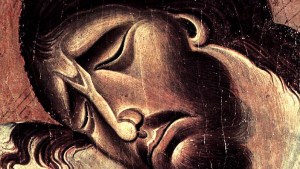Magdalen Panettieri was born in Trino, Italy, in 1443. Her mom and dad were very devout Catholics, and their deep faith inspired their daughter. Even as a toddler, Magdalen exhibited a spirituality that was recognizable. When she was still a youngster she made a vow of virginity, and before her 20th birthday she became a Dominican Tertiary.
This was very unusual because the Tertiaries were generally widows and older women who tended to the active charities within the Dominican ministries. Nevertheless, the young Magdalen fit right in and brought to the chapter a new spirit of penance and compassion that was an example for all of the others. She was most notable for a disposition that was cheerful and happy, and an outgoing attitude that was infectious. People enjoyed being near her because she made them smile. It was a gift she had that she was not even aware of.
Magdalen had a natural love for children, and the kids could sense it. They gravitated to her, sensing how genuine she was. The young, joyful woman began teaching the children their catechism and was remarkably good at it. She had a natural way of describing things and made the teachings of the Church clear and understandable. The kids loved to sit and listen to her. Her classes began to grow, and people from the neighborhood started to attend. The Dominican friars even had to open a large room next to the church for her to use as a classroom.
Magdalen lived at home with her relatives, and any spare time she had, she devoted to the poor and the sick. Her ability as a captivating speaker became known, and both nuns and priests began to come to hear her talk. Her mornings consisted of attending Mass and then Eucharistic Adoration. She was noted for her simple way of life and for her austere existence. She wore a rough, woolen shirt and fasted often in acts of penance.
Magdalen’s youngest brother was always in trouble and had become an embarrassment to the family. It had gotten to the point that he had worn out his welcome at home, but Magdalen refused to give up on him. She fell down on her knees in front of a crucifix and refused to leave until Our Lord assured her that He would help reform the “black sheep” of the family. Jesus came to her and said, “I cannot refuse you anything.”
Raymond da Capua, a man who initiated needed reforms within the Dominican Order (he was beatified in 1899 by Pope Leo XIII), was highly respected by Magdalen, and she promoted his reforms. She was quite successful in her endeavors, and through her efforts the well known Dominican homilist from Milan, Sebastiano Maggi (he was beatified in 1760 by Pope Clement XIII), came to Torino and had a profound effect on all who heard him preach.
Magdalen Panattieri was also a mystic and recipient of the Stigmata. She had predicted that Raymond da Capua’s reforms would be implemented, and she also saw the French invasion of Italy that was about to tear apart her country. She begged God for mercy for her people, and during the war with its horrors and bloodshed, the only town that was continually spared was Magdalen’s home town. The people of Trino always gave credit for this mercy to Magdalen’s close relationship with Jesus.
As for the stigmata, Magdalen never told anyone about her having it. It was discovered after her passing as they prepared her body for internment.
Blessed Magdalen Panattieri, please pray for us.

Read more:
5 Saints who received the stigmata of Jesus Christ

